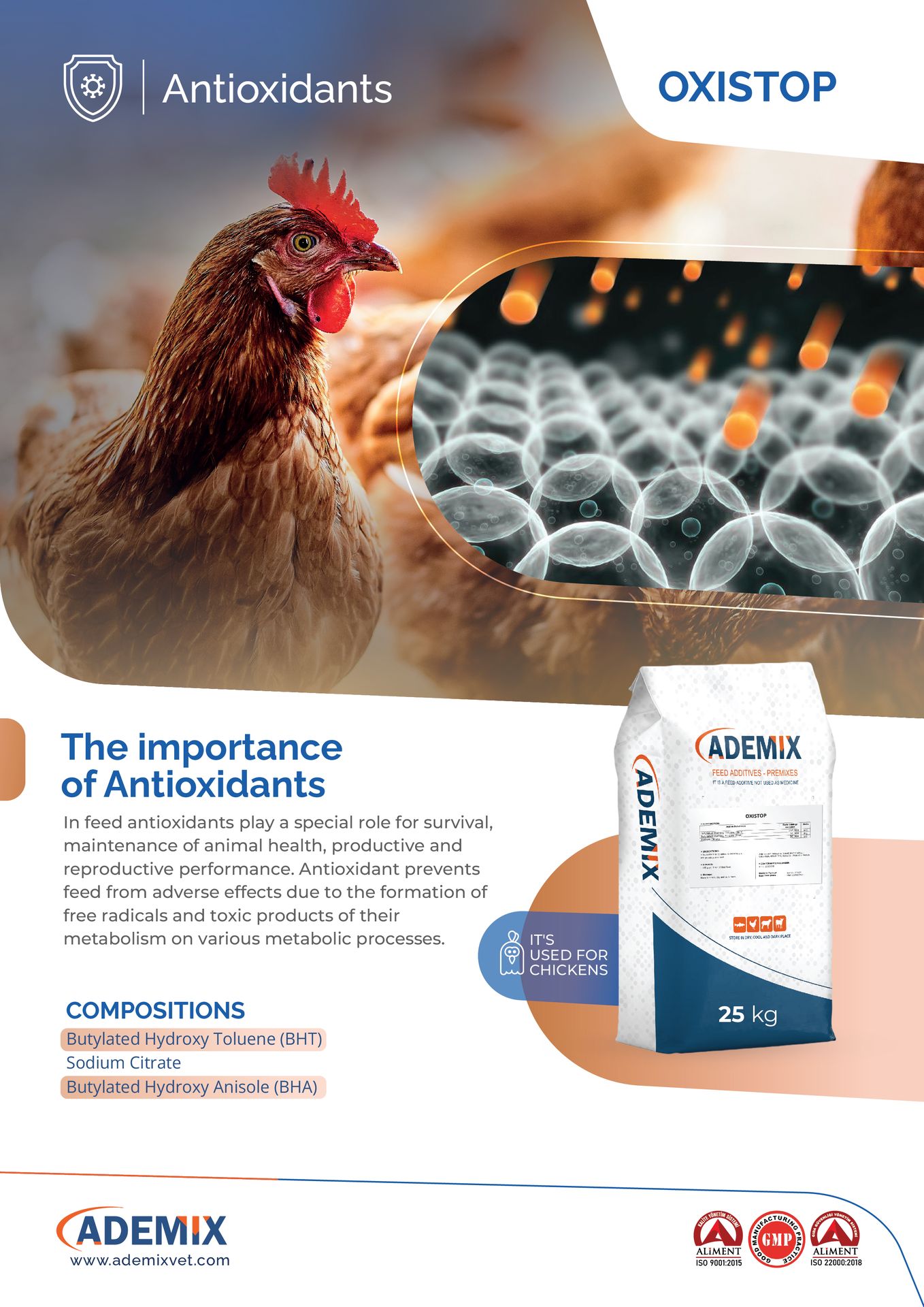Effect of using Antioxidant on efficiency of poultry feed
Oil rancidity problem
Oxidative rancidity represents one of the major causes of deterioration in food for human consumption. Besides producing unpleasant Oduors, it is responsible for losses in flavor, texture, consistency, appearance and nutritional value. In a similar way, in living animals, oxidative stress constitutes an important mechanism that leads to biological damage, and is regarded as one of the causes of several pathologies that affect poultry growth.
Therefore a better understanding of lipid and protein oxidation processes will allow the use of antioxidants to handle and control them. This is fundamental in order to guarantee the quality and safety of meat for human consumption, and in turn the prevention and/or delay of several oxidation processes would allow its management for an optimal quality and shelf life conservation.
Among several dietary components, antioxidants have a special place being major players in the battle for survivability, maintenance, health, productive and reproductive performance of animals. This is largely because of the detrimental effects of free radicals and toxic products of their metabolism on various metabolic processes. Antioxidant balance in the body is responsible for maintaining human and animal health, productive and reproductive performances of farm animals. The antioxidant balance can be adversely modulated by sub-optimal diets and nutrient intakes or positively affected by dietary supplementation
Role BHA/BHT as an antioxidants on feed diet in poultry
1. The effects of oxidised oil, dietary α‐tocopherol and BHA/BHT‐supplementation on the fatty acid composition of mito‐chondrial, microsomal and soluble protein fractions of broiler muscles, and on their lability to metmyoglobin/hydrogen peroxide‐catalysed peroxidation were investigated.
2. Oxidised oil in the broiler diets induced rapid oxidation of the menbrane‐bound lipids and decreased their stability towards metmyo‐globin‐hydrogen peroxide‐catalysed peroxidation.
3. Supplementation of the broiler diets with α‐tocopherol increased the α‐tocopherol concentrations in the microsomal and soluble protein fractions of the dark meat as well as the soluble protein fraction of the white meat. This, in turn, stabilised the menbrane‐bound lipids against metmyoglobin/hydrogen peroxide‐initiated peroxidative changes.
125 gr per 1 ton of final feed.
DOSAGE:
Antioxidant to be added to animals and fish premixes and feed.








